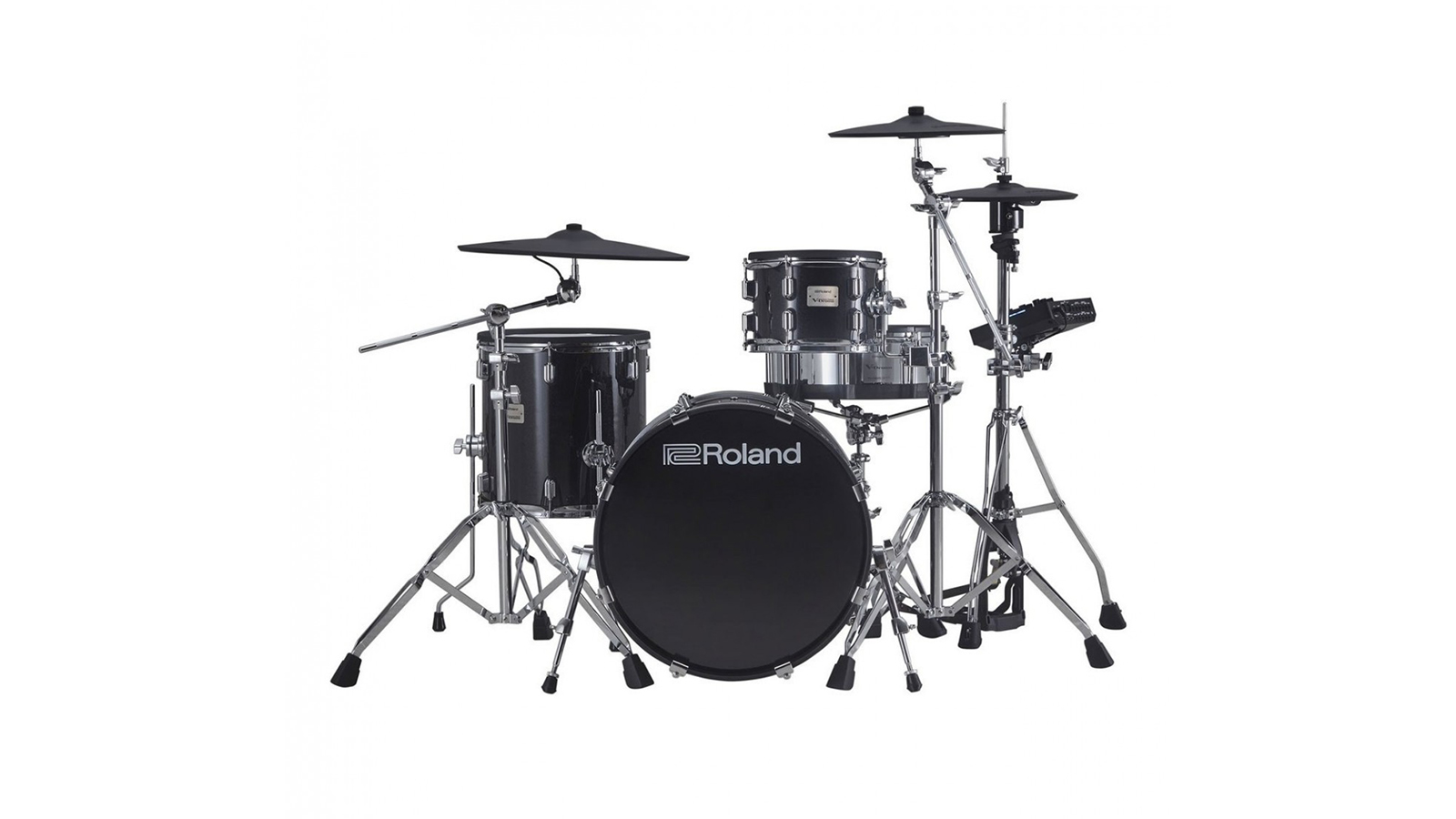MusicRadar Verdict
It’s not cheap, but it looks, sounds and performs brilliantly, and includes a heap of next-level functionality that will put you on the right track for the direction e-drums are heading in. The VAD503 spans applications for use at home or in the studio, and finally delivers an electronic drum kit that not only looks the part, but performs more than well enough to gig with.
Pros
- +
Next-level digital triggering
- +
Comprehensive editing
- +
Genuine acoustic look and feel
- +
Comprehensive connectivity
Cons
- -
The number of editing options means that you’ll need to put some time in to make the most of the module
MusicRadar's got your back
Roland VAD503 review: What is it?
Call it e-coustic, call it hybrid (actually, that one’s already taken) or call it electro-acoustic to irritate your guitarist, but the trend for acoustic drum shells fitted with electronics is growing, fast. Roland calls it VAD (that’s V-Drums Acoustic Design, acronym fans) and the V-Drum pioneer has taken a steady leap into the market for such drum sets over the last couple of years.
For good reason, too, because at the risk of making wildly inaccurate predictions about the next two decades where cars fly, boards hover and we survive on pizza that’s risen in a Black and Decker Hydrator, for now at least, this appears to be the future for electronic drums.
A quick look at the current Roland VAD line-up is all the confirmation we really need, with five configurations in the ‘real shell’ market. Likewise, Yamaha and Alesis (the other two thirds of the Electronic Big Three) and many others are placing their chips on kits that look and feel like acoustic drums, with the flexibility of electronic sets.
The VAD 503 isn’t the most affordable kit in the Roland VAD stable, but it is the entry point from a no compromise, full shell, looks-like-a-drum-kit setup.
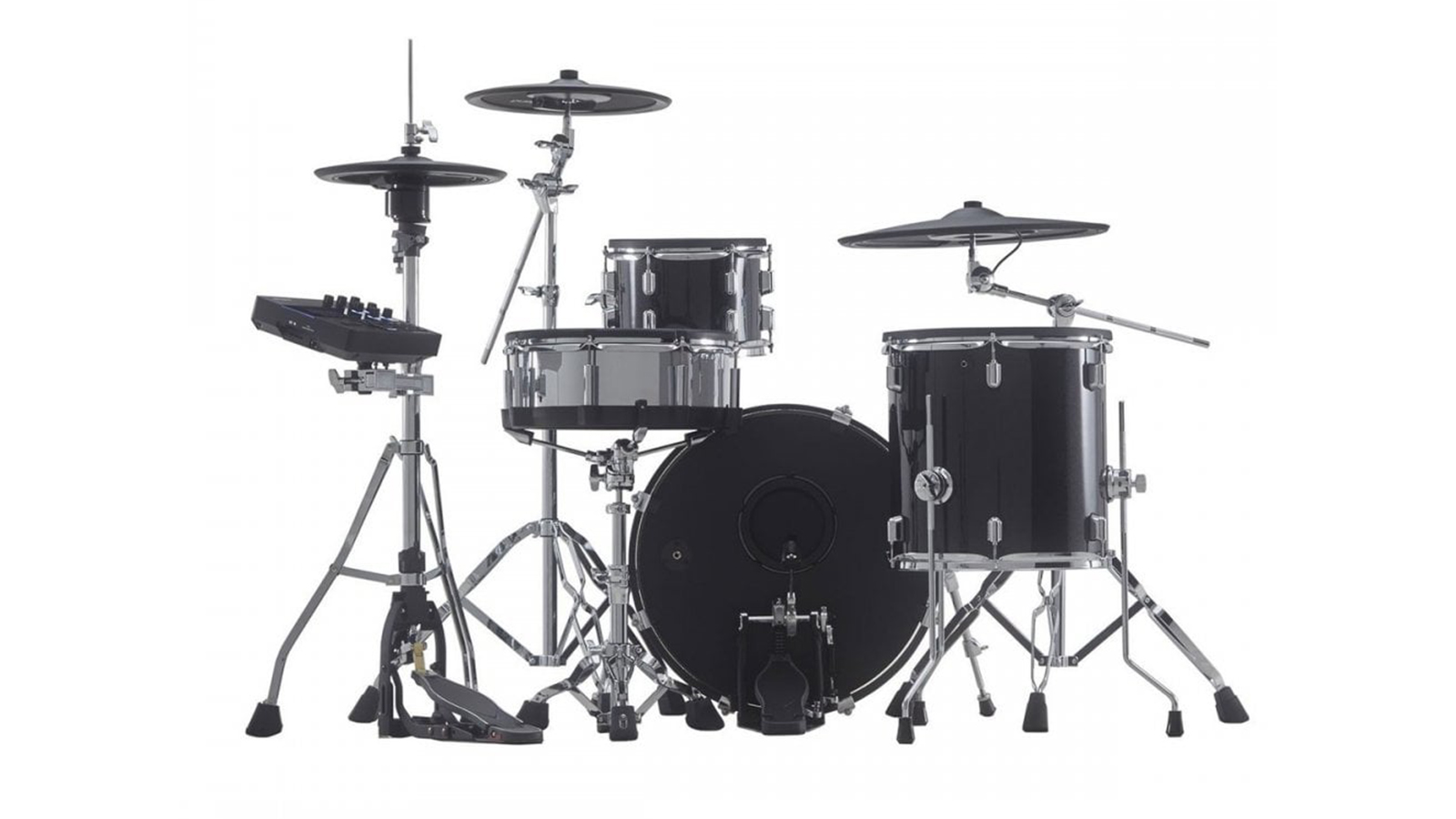
Essentially, the VAD 503 can be viewed as a cut-down version of the VAD 506, featuring the same shells and brain, all that’s different is the number of components: namely the 503’s exclusion of a 12” rack tom and additional 16” crash cymbal. Being part of the ‘5’ series, we get the full-size drum shells (here in a 20”/10”/14” with 14” snare configuration), and Roland’s second-in-command TD-27 module.
The cymbal set comprises an acoustic stand-mounted VH-10 hi-hat, CY-14T crash and CY18 DR, and the kit also comes with a ‘combination’ tom/cymbal stand (with a clamp for hanging the tom), plus an additional boom stand for the ride cymbal.
That ride cymbal brings us to our next big spec point. The VAD 5 series’ use of the TD-50-derived TD-27 module gives us a more affordable entry point into Roland’s other next-level anticipation: digital-sensing pads.
Want all the hottest music and gear news, reviews, deals, features and more, direct to your inbox? Sign up here.
Here, the PD-140DS snare pad, and CY-18 DR ride cymbal make use of this function, which is trickled down from Roland’s flagship TD-50-based kits. The TD-27 is currently the only other module in the Roland line-up that can use them, making this a crafty way in without the outlay - which at the time of writing is a saving of more than half the ‘street’ price of Roland’s top dog VAD706.
Roland VAD503 review: Performance & verdict
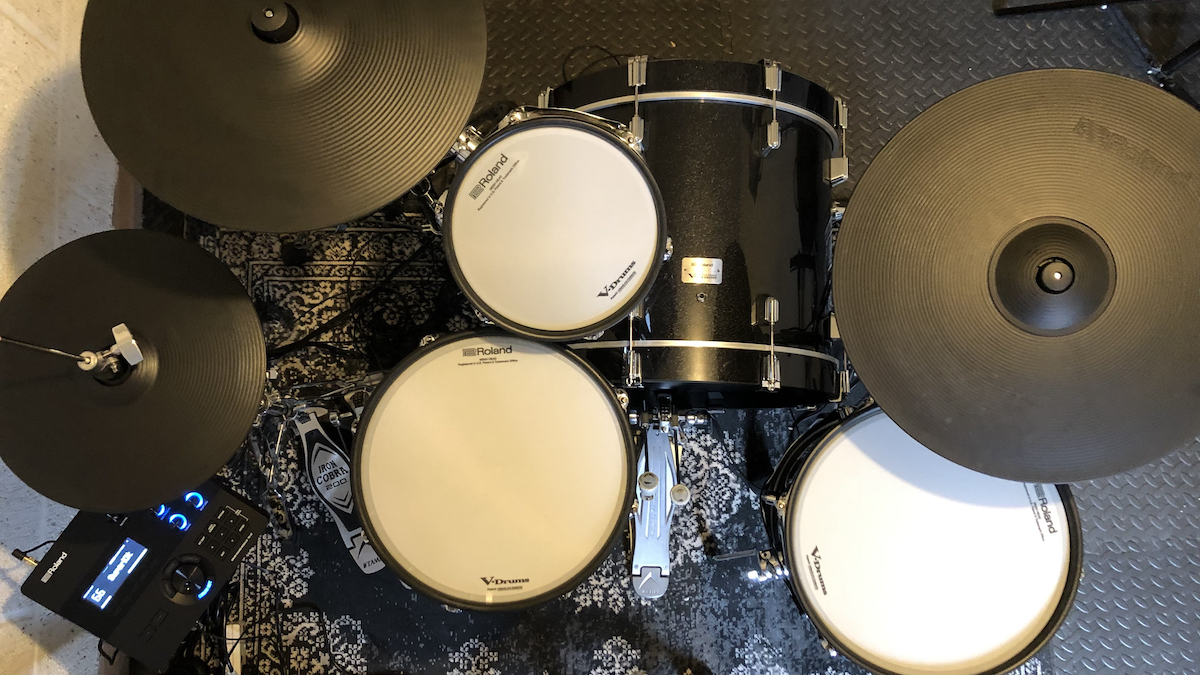
There’s no getting around it, ordering a VAD kit is also going to make you the new owner of a lot of packaging. But that’s just the nature of what you’re buying, and Roland has done a great job at keeping it to a minimum while still protecting the kit in transit.
Setting up is pretty easy too - much less involved than putting together an electronic kit on a rack with a box full of clamps.
There are a couple of points to make before you set your kit up, though. First, if you’re planning on using a double bass drum pedal, we’d advise loosening the batter side of the bass drum and rotating the playing surface to accommodate both beaters more centrally.
The ‘analogue’ pads (everything apart from the snare and ride) connect to the module with a 10-way DB25 wiring loom which features jack plugs for every pad, as well as the additional tom pad you’d receive on the VAD 506, and duplicate analogue inputs for a snare and ride cymbal.
In addition to the cables on the wiring loom, the module also features a second dedicated crash cymbal input, plus three assignable auxiliary trigger inputs.
Now, you might be thinking “I’ve got a couple of spare pads knocking around, so can I connect them to the spare snare/ride connectors and get some additional inputs for free?”. The answer is, no, you cannot. The snare and ride plug into two of the TD-27’s three digital USB ports, and when they do, it’ll disable their analogue counterparts. You’re not losing anything (far from it, as we’ll discover), but you will have a couple of redundant jacks on the loom.
“Three digital inputs, you say?”. Yes. As well as the snare and ride cymbal, you can connect a third digital pad to the kit. That means that Roland’s recently-released VH-14D two-piece digital hi-hats are a compatible upgrade, and the most obviously intended use of the third digital socket.
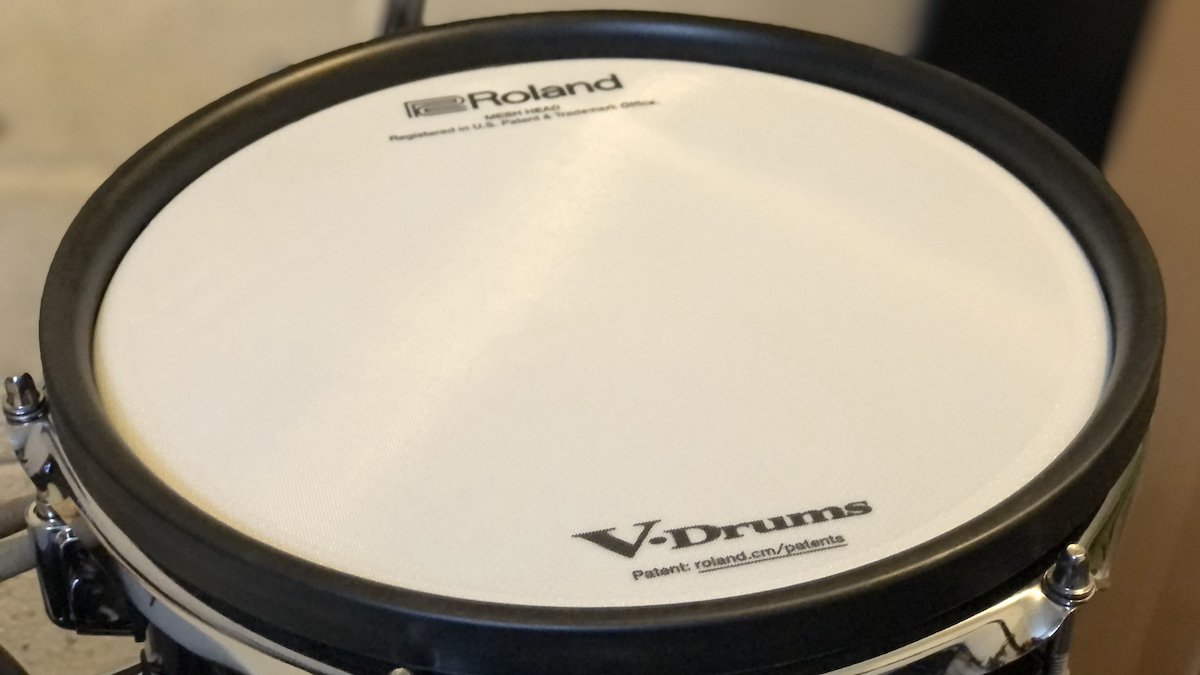
Alternatively, you can connect an additional CY-18 DR or PD-140DS, however it’s important to remember that the digital inputs work instead of - not in addition to - the total number of analogue trigger inputs.
There’s only one snare input and only one ride input, so while you can attach multiple digital pads, you won’t get the full three-zone count from a second ride (but it will function as a two-zone cymbal, assignable to whatever sound you choose), nor will you get a fully functioning snare with cross-stick recognition from the additional pads. Of course, the three aux inputs also bring the total up, so you’re by no means limited when it comes to extra connectivity.
But we’re getting ahead of ourselves, because this review is focussing on what the VAD-503 is, rather than what it could be.
Starting with the overall setup, if your only experience of electronic drums is compact pads on a frame with a bass drum tower and separate hi-hat pad/controller, you’re in for a revelation. In all honesty, even if you’re used to a higher-end kit with larger pads, you’re still going to be in for a surprise.
That’s because you’re not sat behind some pads that feel a bit like a drum kit. You’re sat behind a drum kit, it’s just fitted with mesh heads.
Those diameters and depths make a huge difference (or a huge similarity, if you’re jumping from acoustic to electric). Being able to tilt the rack tom to the correct angle, place the snare at the correct height and physically pick up the floor tom to move it all add to the realism.
Everything sits where it should, without the false sense of speed or cramped positioning, and that really shouldn’t be underestimated when it comes to replicating the feel of an acoustic kit.
This continues with the bass drum, which in terms of weight and sturdiness behaves just like an acoustic drum. The design suggests that you’re moving air in a similar way to an acoustic kick, and while this isn’t particularly noticeable above a bass drum tower when it comes to the airborne noise in the room, it definitely is when it comes to the sort of rock solid resistance you get when hitting it with the beater.
The toms are both dual-zone, and as we’ve already mentioned, if you’ve spent any time at all behind an electronic kit where the toms are all the same size, playing a VAD kit is like having your eyes opened when it comes to replicating acoustic realism.
The CY-14T is Roland’s latest crash design (along with the CY-16T), with the ’T’ standing for thin. And thinner it is, around half-a-centimetre shallower at the edge of the cymbal. This not only makes choking feel more realistic, but it cuts down the bulk when crashing, particularly noticeable when compared to our older CY-13. The movement is more free, our strikes less laboured, and the all-round response more realistic.
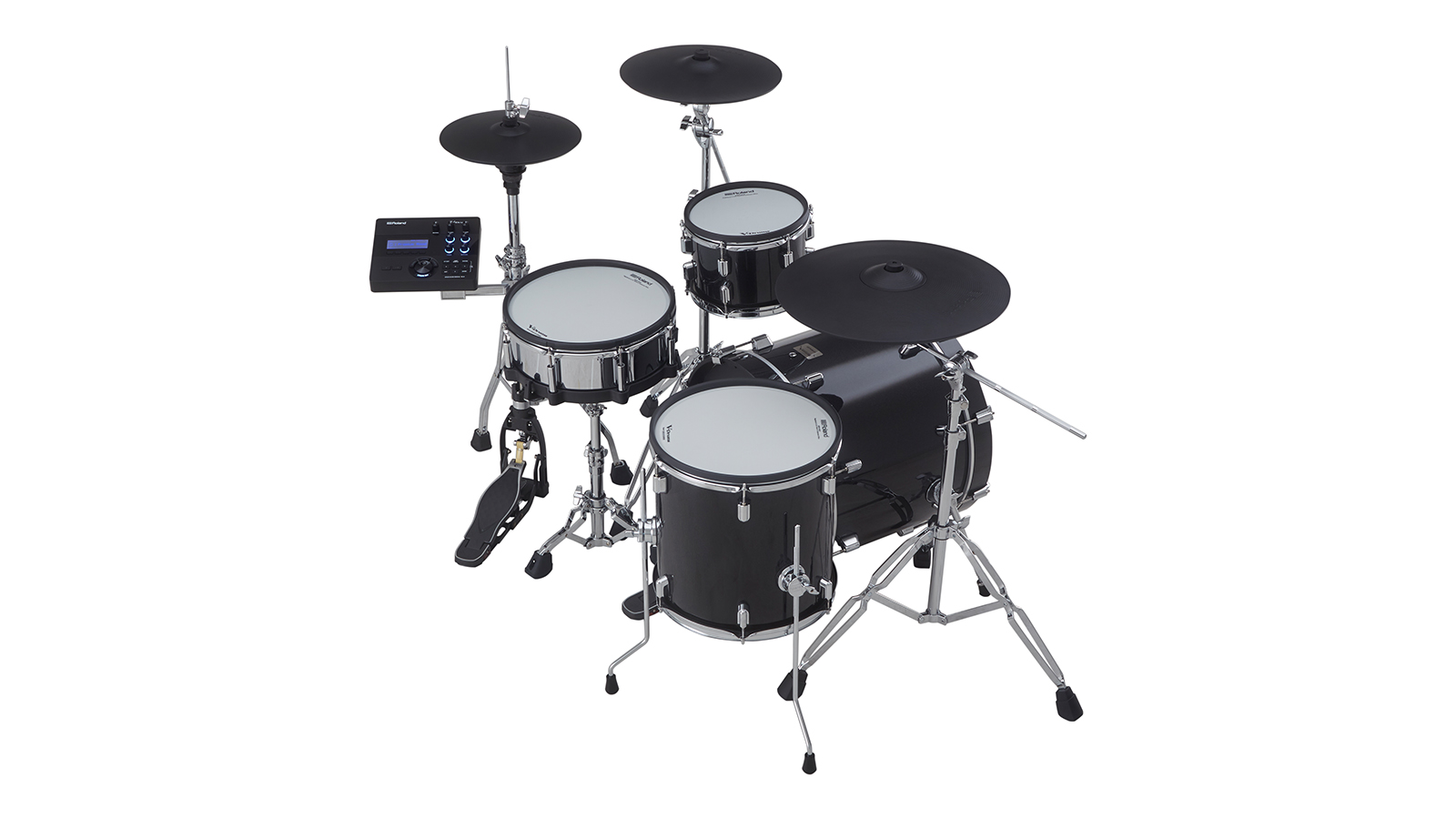
But the real stars of the trigger show are the digital sensing pads. Not only is it the ‘correct’ diameter, but the PD-140DS is weighty too meaning that laying into it isn’t going to cause movement.
It has two playing zones (the head and rim), but is also fitted with four sensors under the mesh head to detect where you’re striking.
This means that combined with the TD-27’s sound engine, applying acoustic snare techniques such as rim shots or buzz rolls just happen. There’s no mis-triggering and the replication of our stick positioning adds an extra dimension.
Playing a cross-stick was simple too. As long as the snare detects your hand is placed on the head, it’ll automatically switch to a cross-stick sound when you strike the rim. Although we did find ourselves adjusting the sensitivity settings within the TD-27 to match the velocity of the cross-stick sound to our playing style.
You can even play the PD-140DS with brushes, and by selecting an appropriate sound within the TD-27, and engaging the Brush Switch, sweeping is perfectly possible. We’d suggest using nylon brushes though, in order not to damage the mesh heads.
It’s a similar story with the CY-18DR. This is the largest cymbal in the Roland line-up, and as such features the most natural swing. The pronounced bell really makes it feel more realistic and the increased size of the cymbal means that transitioning between edge/bow and bell is more fluid with fewer mishits likely to occur.
It also makes use of additional sensing, which is most noticeable when muting the cymbal. As well as the choke zone, you can place your hand, or just a finger on the ride and mute the cymbal. Similarly, you can also play it while muted and it’ll produce a staccato ride sound to match. Granted, this is unlikely to be a key feature if you spend most of your time leathering a crashed ride, but it does add an extra level of nuance if you’re playing more subtle styles.
TD-27 module
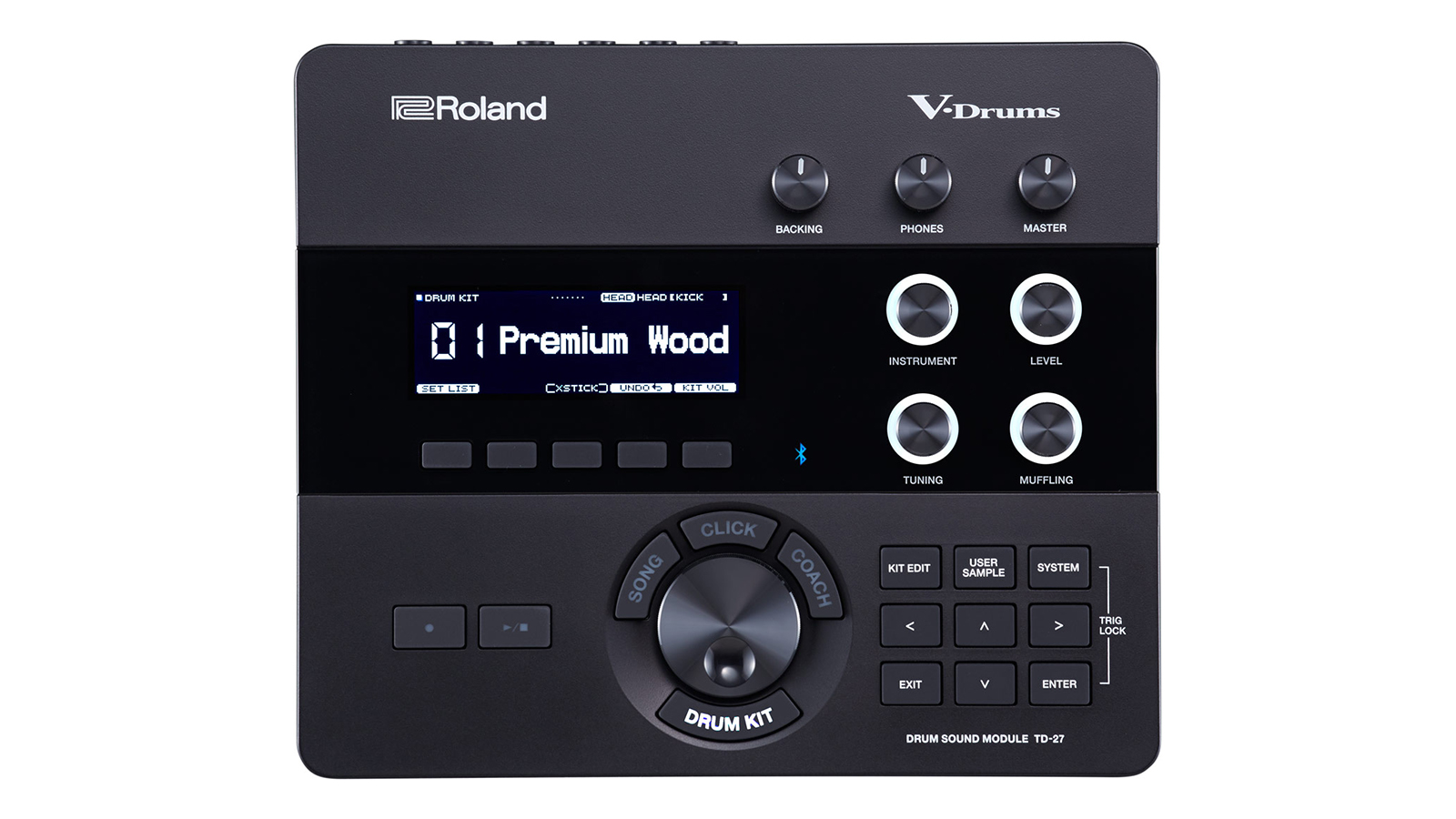
As we mentioned above, the TD-27 is Roland’s second-from-the-top module, borrowing features and sounds from the TD-50/TD-50X. In addition to the advanced trigger compatibility, it includes a very well-stocked mixer section with multi-fx, EQ and compression per-pad plus a fully-functioning multi-channel audio/MIDI interface, Bluetooth, multiple output options and an SD card slot.
The sounds start with Roland’s Prismatic Sound Modelling (also derived from the TD-50) which aims to give greater realism than simply repeating playback of the exact same sound every time you hit a drum or cymbal. As you’d expect there are plenty of non-acoustic/kit sounds in there too, allowing for contemporary and classic electronic sounds as well as percussion instruments.
It also has the ability to import one-shot samples into its memory, which can then be played from the pads as a sound in its own right, or layered with the internal sounds to create custom kits.
As well as this, Roland has included a lot of editing functionality such as tuning (including drum diameter and depth) and muffling, head type, bass drum beater type, even the snare wires.
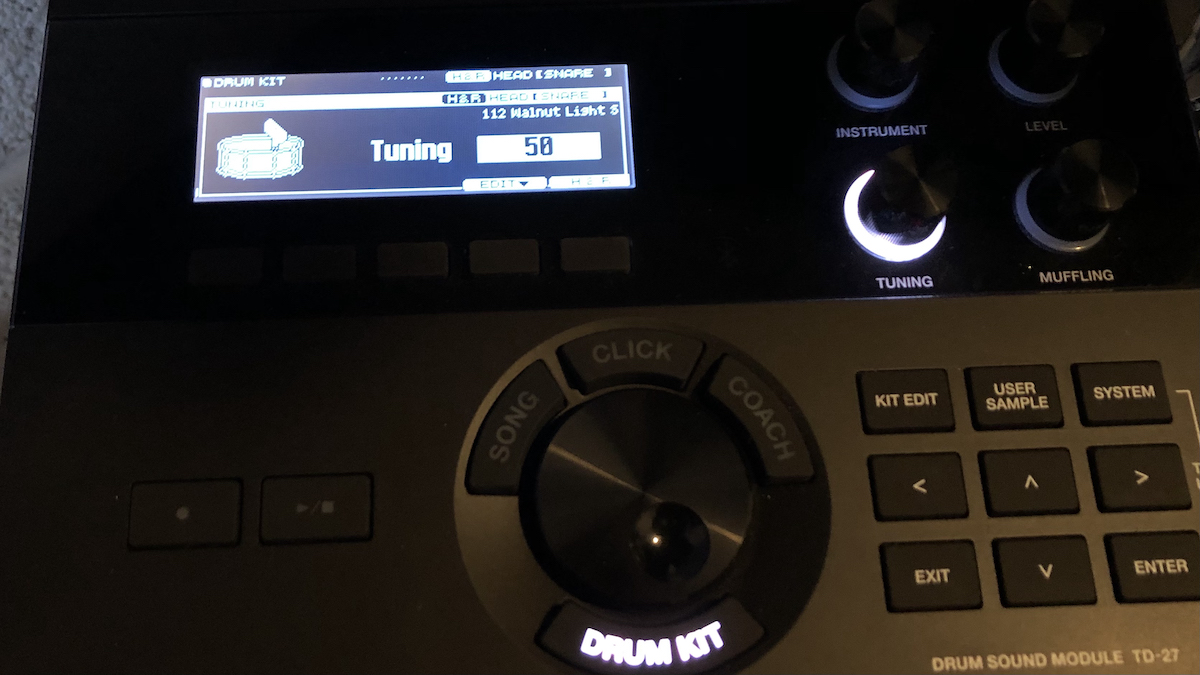
Select instruments include additional editing parameters, such as overtone adjustment on the snares, and ping level/colour on the ride cymbals.
Then there’s the PureAcoustic Ambience technology, allowing software-style manipulation of your room sound and overhead mic placement.
Throw in detailed EQ, transient (attack level) and compression settings for every pad (plus overall kit EQ and compression too), and it’s clear that there is a lot to get your hands dirty with here.
We’d suggest that you do too, because as we’ve noted before, presets are simply a starting point. They’re not tailored to every player’s taste and response.
There is an almost overwhelming number of options inside the TD-27 - and that’s not a criticism. But it does mean that with every instrument sound comes a lot of tweakability. Take the first acoustic snare on the menu (one of our favourites, the Steel Fat S) for example.
You can change the shell depth (1-inch-30”), head type (clear/coated/Pinstripe), overtone level (11 increments) strainer tension (nine increments), snare wire level (10 increments) and more. That’s before you adjust the individual tuning control, select one of the 10 muffling options or start applying EQ, compression or ambience processing.
Our point is, this will require a bit of investment of time in order to get used to how the parameters interact, and what to change when you have a desired sound in mind.
The good news is, the building blocks are all there. You can speed this process up thanks to the easy pad copy and paste setting. By scrolling through the presets and listening for sounds that are close to what you’re after, you can intuitively lift various kit parts and place them into your own User Kit slots.
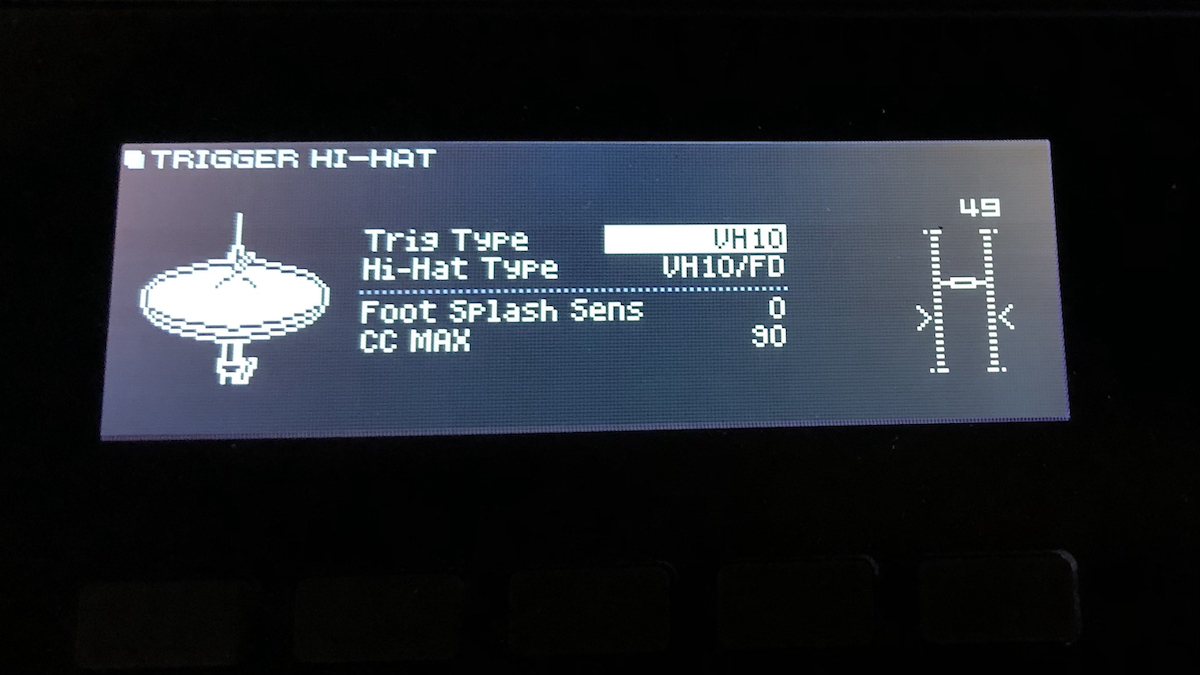
It’s a quick way of reverse-engineering some of the module’s processing capabilities, and you’ll also reinforce how to navigate the menu systems in a way that you might not when starting from scratch.
From here, there’s a world of experimentation at your fingertips. Roland has made the TD-27 pretty intuitive to use with as graphic an interface as possible, but we’d also love to see a computer-based editor for the TD-27.
Pads and sounds aside, one of the jewels in the TD-27’s crown is its connectivity and utility features. There’s a built-in metronome and coaching modes, the latter might seem a bit beginner-focussed at this level, but are still useful if you want to brush up on things like timing.
Then there’s the Bluetooth connectivity, which works seamlessly with our phone to allow us to pipe our Spotify (or any other audio) account into our headphones alongside the kit sound. Brilliantly, the module can record to an SD card too, which makes recording yourself playing along to the Bluetooth stream (yes, it’ll record that too) a doddle. Ideal if you want to make quick drum covers or live recordings.
We mentioned earlier that the TD-27 functions as an audio interface too, and it’s almost criminally overlooked, as it can send up to 28 channels of audio to a computer, while playing back four. In reality, you may not require this many, but it does allow for detailed capture (and subsequent mixing) if you’re recording to a computer, and you don’t have to use it to this extent.
On a similar note, you can output your pads to the direct analogue outputs if you’re playing live, which will allow individual control over whatever sounds you send to these outputs.
Roland VAD503 review: Verdict
Acoustic conversions have become increasingly popular in recent years. But first you need a kit to convert, triggers and heads, the time and knowledge to do it and a module to run it all from.
Here, Roland has done it all for us. No, it’s not cheap, but it looks, sounds and performs brilliantly, and includes a heap of next-level functionality that will put you on the right track for the direction e-drums are heading in.
The VAD503 spans applications for use at home or in the studio (either with the on-board sounds or triggering third-party samples), and finally delivers an electronic drum kit that not only looks the part, but performs more than well enough to gig with.
Roland VAD503 review: Hands-on demos
Drumtec TV
65 Drums
Adrien Drums
Roland VAD503 review: Specification
- Module: TD-27
- Sounds: 728
- Kits: 100 total slots
- Effects: 30 multi-FX, pad EQ, pad compression, master EQ, master compression, overhead mic simulator, room/reverb
- Connections: 10-way analogue loom, 3x digital trigger inputs, additional crash trigger input, 3x aux trigger inputs, 2x direct outputs, master outputs, headphone output, MIDI I/O, USB, SD card slot, Bluetooth
- Pads: KD-200 bass drum, PDA-100 rack tom, PDA-140 floor tom, PD-140DS digital snare drum, CY18-DR digital ride cymbal, VH-10 hi-hat, CY-14T crash cymbal
- Hardware: 2x cymbal stands, 1x module clamp, tom holder
- Cables: DB-25 trigger loom, 2x digital trigger cables
- Contact: Roland

Stuart has been working for guitar publications since 2008, beginning his career as Reviews Editor for Total Guitar before becoming Editor for six years. During this time, he and the team brought the magazine into the modern age with digital editions, a Youtube channel and the Apple chart-bothering Total Guitar Podcast. Stuart has also served as a freelance writer for Guitar World, Guitarist and MusicRadar reviewing hundreds of products spanning everything from acoustic guitars to valve amps, modelers and plugins. When not spouting his opinions on the best new gear, Stuart has been reminded on many occasions that the 'never meet your heroes' rule is entirely wrong, clocking-up interviews with the likes of Eddie Van Halen, Foo Fighters, Green Day and many, many more.
